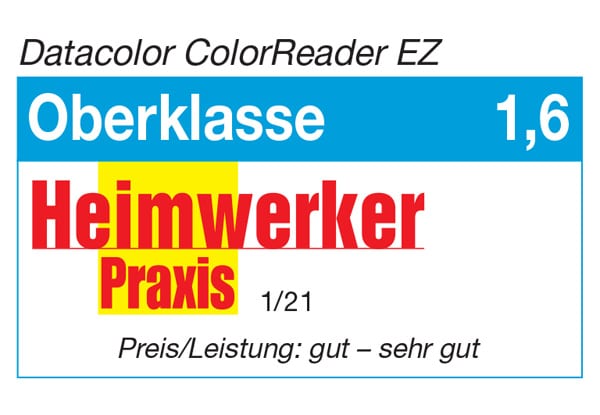© 2025 Datacolor All Rights Reserved.
Close
Buy Now, Pay Later with Shop Pay
Choose Shop Pay at checkout and pay in 4 interest-free installments on orders between $50 and $3,000.*
- Interest free
- No late fees
- No hidden fees
- No impact on your credit score
- No surprises
How it Works:
- Choose Shop Pay at checkout
- Pay in 4 interest-free installments
- Your card will be billed every 2 weeks
- It’s as easy as that!
Shop Pay installments in partnership with
* Payment options are offered by Affirm and are subject to eligibility check and might not be available in all states. California residents: Affirm Loan Services, LLC is licensed by the Department of Business Oversight. Loans are made or arranged pursuant to California Financing Law license.
Close
Shipping charge and method
United States and Canada
- Flat-rate fee of $5.95 (USD*) on all orders
- Standard 3–5 day shipping
*Canada shipping charges will be based on current currency conversion rates










How to Paint Like a Pro
How do you get professional-looking results from a do-it-yourself paint job? These helpful tips will elevate your painting skills from amateur to advanced in no time.
Prep, Prep, Prep!
It’s probably the least exciting yet most important part of any paint job; prepping your walls or surface before you paint. That includes scraping off any old, loose paint, ensuring the surface you’re going to paint is smooth and cleaning it to remove dirt and oils.
Start with a smooth surface – Remove any nails or hooks in walls and scrape off any chipped paint with a paint scraper. Sand the scraped surfaces smooth. Spackle any holes, cracks and uneven surfaces then sand smooth once spackle has fully dried. If there are a lot of flaws on a wall, you might want to consider using wall lining paper to provide a better surface.
Clean the surface well – Clean walls, trim and ceilings to remove dirt and oils with TSP (trisodium phosphate). Check to see if there are any stains (water, oil, rust) which may need to be covered with a primer before painting. Make sure surfaces are completely dry before priming or painting walls.
Priming your walls – A primer/sealer is used to prep a wall for paint. It’s used on: porous surfaces (such as new drywall or skim-coated walls); stained surfaces (to prevent stain seepage); when using a latex paint over an oil-based paint; when painting a light color over a darker color; and in lieu of needing to sand a glossy paint surface for better paint adherence.
You can opt for a standard white primer or have your primer tinted to match your paint color. Self-priming paints are fine to use on clean walls with no stains or marks, but these may require additional coats on less-than-perfect walls.
Have the right supplies on hand:
Use drop cloths to protect floor and furnishings from paint spills and splatters.
An angled brush is best for cutting into corners, around edges and for trim work. Use a straight brush for painting wider areas.
Rollers and roller covers – Rollers provide a smooth, even coverage on your walls. The right roller cover is dependent on whether you’re using latex or oil-based paint and how smooth (plaster/wall board) or rough (stucco/concrete) your surface is.
Paint roller trays and disposable paint tray liners. Liners make clean up easier.
Choose the Right Paint Finish for the Job
Pro painting tips and techniques
Your walls are smooth, clean, primed and dry. You have drop cloths protecting your floors and furnishings. You have the supplies you need and the paint you’re going to use and now you’re ready to paint!
Paint your room in this order: ceilings, trim, walls and “cut in” edges first. Cutting in is where you outline the walls, ceilings and trim with paint. Make sure you feather the edges of where you cut in so you can easily blend in the paint seams when you paint the wall. Work from top to bottom. Here are the tips and techniques the pros use for flawless results:
Tape edges for a clean line
Tape off areas where you want a clean paint line, such as along the ceiling, and around windows, doors and baseboards. Use painter’s tape or Frog Tape® instead of masking tape to help prevent paint bleed. To keep your paint line sharp, remove the tape carefully and slowly at a 45 degree angle once you’re done painting and the paint has dried.
Prime your painting tools
Rollers – To help prevent any lint from the roller cover winding up on your freshly painted wall, roll the cover over some duct tape to remove any loose lint before using it. Then wet the roller with water if you’re using latex paint or mineral spirits if you’re using oil-based paint and squeeze excess water/mineral spirits out until the roller cover is damp. This will make cleaning the cover easier and provide for a smoother paint finish.
Brushes – As with paint rollers, before painting, dampen the brush with water (for latex paints) or paint thinner or mineral spirits (for oil-base or alkyd paints). Blot excess water or solvent from the brush so it is just damp.
If using more than one gallon of paint, “box” the paint – meaning pour the gallons of paint you purchased into a 5-gallon bucket and stir well. This will ensure consistent color, especially for custom shades. Try to purchase all your paint at one time to further ensure color consistency.
Loading the paint onto your tool properly
A brush or roller overloaded with paint can leave unsightly drips, lap marks and brush strokes. Too little paint can cause streaking, uneven coverage and blotchy results.
Loading your paint brush – When using a brush, paint from a small plastic bucket, not the paint can, to keep things neat and keep the paint in the can fresh and free from dried bits of paint. Dip only 1/3-1/2 of the length of your paint brush bristles into the paint. Instead of dragging the brush against the top edge of your paint bucket, just press the bristles against the side of your paint container and lightly tap the brush against the inside of the bucket.
Loading your paint roller – Put a tray liner in your roller tray and fill the tray well no more than halfway full. Slowly roll your primed roller into the paint, then back onto the ribbed section several times to ensure the roller is evenly filled with paint, but not overloaded.
Pro Paint Application Techniques
If you’re right-handed, start the cutting-in process in the upper left-hand corner. If left-handed, begin in the upper-right. Work from top to bottom and always finish a wall before stopping or taking a break. Feather the paint edges to prevent uneven paint buildup. When completely dry, apply a second coat.
When the paint you’ve cut-in is completely dry, you can start painting your ceiling and walls. Work in small sections and always work towards the wet edge to keep paint lines from forming. Start at the top/corner and work your way down (or across if you’re painting your ceiling). Using a roller, apply paint with smooth, even pressure (not too fast which can exacerbate splattering) in a “w” formation, filling in the spaces with your roller to avoid lap marks and provide a seamless coating. If you see a drip mark, quickly feather it in with soft, light strokes from a brush.
If you’re using a brush, similar principles apply – don’t overload your brush and don’t press too hard to avoid brush marks. Work in the same top-to-bottom sequence, and always work toward the wet edge for even coverage.
A good quality paint will provide seamless coverage in no more than two coats. Wait until the paint has completely dried to check for any missed spots, or uneven coverage. You can lightly feather paint onto small missed spots. If you’ve missed a number of spots on a wall or a larger area, paint over the whole wall for even coverage.
Drip marks can be lightly sanded down and re-painted with light brush strokes or a small touch up roller.
Related Posts
Datacolor’s ColorReader in use at “Malerbetrieb Vogt” – Professional painters from Fulda/Germany
How Colors Impact Marketing in the Paint & Coatings Industry
2023 Paint Color Trends for the Home